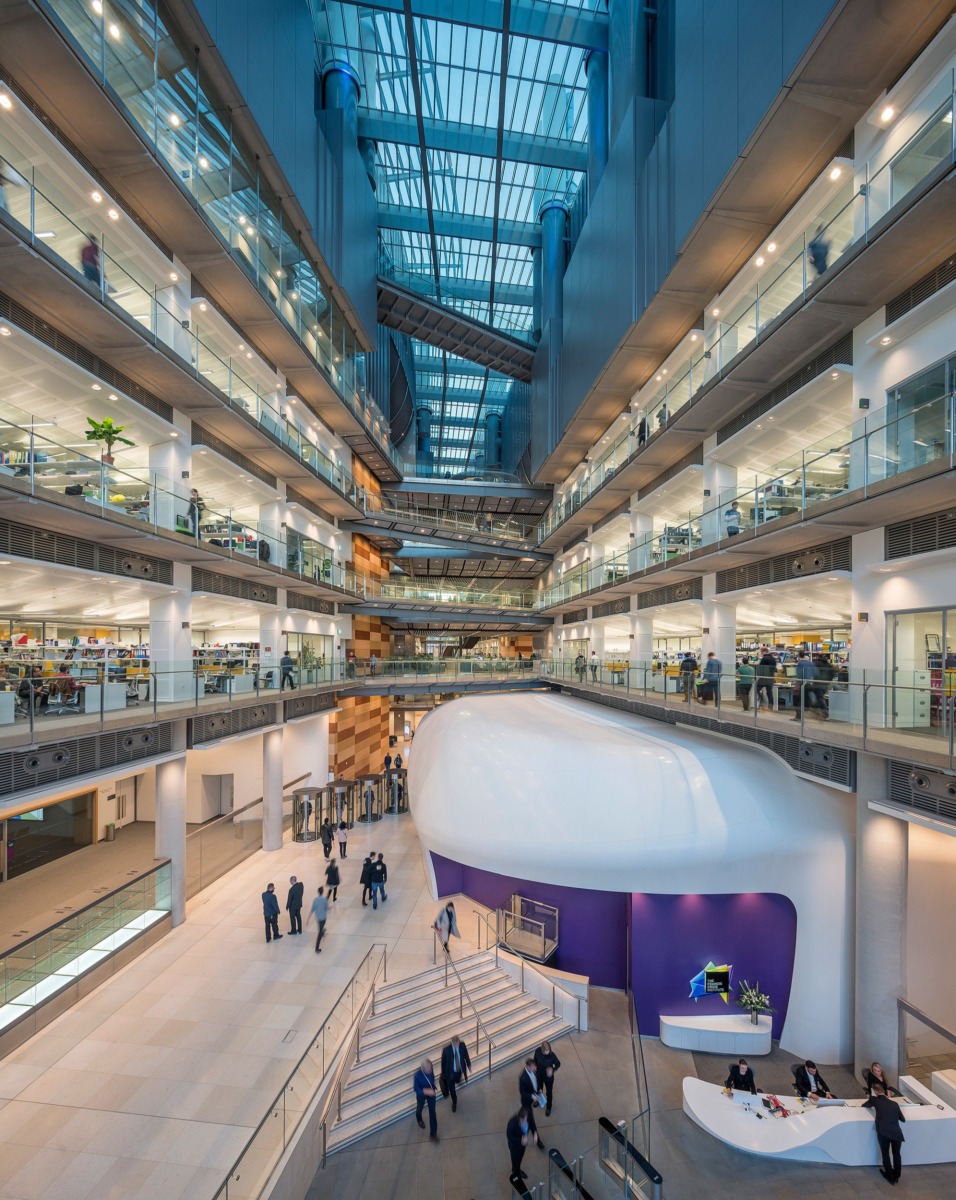Insights
Balancing collaboration and wellbeing: part 1.
How can collaborative work modes be created in balance with wellbeing needs of end users?
The pandemic was a trigger for a change in working practices. Thanks to the advance in comms technology, most individual work can be carried out remotely which has resulted in reduced spaces for individual study, to the benefit of collaborative, break-out and social spaces. However, the need for quiet spaces near labs to carry out write-up works is still present in science buildings.
One design feature often preferred by clients and architects is the large open-plan space that provokes interactions and collaboration. Yet lessons learned around now-established, large-scale, inter-disciplinary research facilities, and studies published by leading universities, have shown that the benefits of the all-under-one-roof approach can only work if human-centric considerations are factored into the design. Acoustics, natural light and indoor air quality must take centre stage in the melting pot of interior design to bolster wellbeing.
We explore which spaces can practically co-exist in an open-plan area, we highlight the benefit of transparency over complete openness and explain how acoustics is integral to achieving these seemingly opposite aims, i.e. creative collaboration and human-centric design in science buildings.
Why does collaboration bolster research?
The axiom of collaboration in scientific research is that working with people who have different perspectives or areas of expertise can result in better ideas and outcomes. As the individual knowledge base becomes more and more specialised, the need to work together is crucial for real-world outcome/benefit. The increasing specialisation of skills means that you need bigger and bigger groups, with more and more specialists, to be successful.
A simple analogy can be made in aircraft design. In 1903, the Wright brothers entirely designed and flew an airplane. Today, there are dozens of specialists working on the engines alone. A range of specialised skills is required to work together through effective collaboration.
Need to bring disciplines together.
Throughout history, some of the most remarkable scientific discoveries have emerged from surprising collaborations. These partnerships have brought together people from vastly different perspectives, backgrounds, and expertise levels to work collaboratively on complex problems. The results have often been unexpected and ground-breaking, leading to amazing innovations and scientific breakthroughs.
Historic examples.
One surprising scientific collaboration was that between Alan Turing, a brilliant mathematician, logician, and computer scientist, and Joan Clarke, a codebreaker during World War II. Working together, they were able to crack the Nazis’ Enigma code, a feat that many thought impossible. Joan Clarke’s knowledge of German and her multi-lingual skills, paired with Alan Turing’s mathematical genius and design, led to the creation of the Bombe, a machine that automated codebreaking techniques. This collaboration allowed them to cut the war by as much as two years and saved thousands of lives. They were both very different people with different backgrounds and skill sets, but their partnership led to the development of some of the most sophisticated codebreaking techniques in history.
Another fantastic example is geneticist James Watson and physicist Francis Crick. Despite coming from different disciplines, they took on one of the most significant problems in genetics, and unravelled the double helix structure. They observed evidence and made inferences about the DNA structure of energy minimisation, salt bridges, and hydrogen bonding, as well as the contributions of other scientists. They worked tirelessly to develop new techniques, test new hypotheses, and push the boundaries of scientific discovery. Their work shed light on one of the most fundamental building blocks of life, thereby revolutionising our understanding of genetics and opening the door to new developments, including gene therapy, cloning, and synthetic biology.

Francis Crick Institute, London
Today, central London’s Francis Crick Institute is dedicated to research in biomedical sciences and epitomises the idea of collaboration.
We will encourage wide-ranging scientific interactions and promote robust scientific discussion, building an open and permeable culture that brings together different disciplines and perspectives, and fosters the free exchange of ideas.
The Francis Crick Institute’s mission statement was translated into the design of the building.
The building was designed to maximise opportunities for scientists working in different areas of research to meet and share ideas, and feedback from our staff suggests that this is happening.
Crick’s chief operating officer, Sam Barrell.
These examples show that unexpected pairings and collaborations can lead to some of the most monumental changes in science. By working together, partners can bring new perspectives, new ideas, and diverse resources to the table, all of which can lead to ground-breaking results. So, let us take inspiration from these collaborations and embrace and encourage diversity, inclusion, and innovation in all aspects of science.
In part 2, I will be discussing the drawbacks of dense open-plan layouts and how organisations/institutions can encourage and facilitate collaboration among researchers and bring them back together, all under one roof.